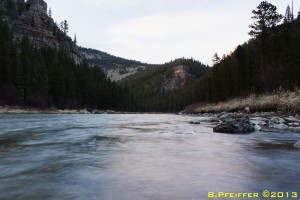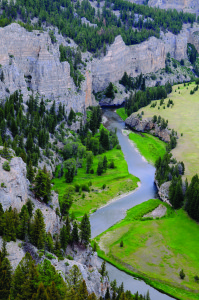by Derf Johnson
 The application to develop an underground copper mine that would be adjacent to and directly underneath one of the Smith River’s most important tributaries will land on the desk of the Montana Department of Environmental Quality (DEQ) any day now. This application will, if approved, allow Tintina Resources, a Canadian company, (and its majority owner, Sandfire, an Australian mining firm), to move forward with a large-scale copper mine that could have irreparable impacts on the Smith River watershed. It is absolutely critical that the public be heavily engaged in DEQ’s review process in order to hold Tintina/Sandfire’s and DEQ’s “feet to the fire.”
The application to develop an underground copper mine that would be adjacent to and directly underneath one of the Smith River’s most important tributaries will land on the desk of the Montana Department of Environmental Quality (DEQ) any day now. This application will, if approved, allow Tintina Resources, a Canadian company, (and its majority owner, Sandfire, an Australian mining firm), to move forward with a large-scale copper mine that could have irreparable impacts on the Smith River watershed. It is absolutely critical that the public be heavily engaged in DEQ’s review process in order to hold Tintina/Sandfire’s and DEQ’s “feet to the fire.”
 Once the mine operating permit application is submitted, it will initiate a series of deadlines and timelines in which MEIC and the public will have the opportunity to review and comment. The application materials will contain information on the mine’s overall impact, such as the area to be disturbed, the reclamation plan, essential hydrologic data, and the proposed tailings impoundments. Review on the part of MEIC and the public will be esential to ensure that the water quality of the Smith River is not threatened, especially considering that the mining industry has modified the Hardrock Mining Act at the legislature to heavily favor its interests.
Once the mine operating permit application is submitted, it will initiate a series of deadlines and timelines in which MEIC and the public will have the opportunity to review and comment. The application materials will contain information on the mine’s overall impact, such as the area to be disturbed, the reclamation plan, essential hydrologic data, and the proposed tailings impoundments. Review on the part of MEIC and the public will be esential to ensure that the water quality of the Smith River is not threatened, especially considering that the mining industry has modified the Hardrock Mining Act at the legislature to heavily favor its interests.
 Here is a general description of the timeline, and potential deadlines, for DEQ’s review of the application:
Here is a general description of the timeline, and potential deadlines, for DEQ’s review of the application:
- Once the application materials are submitted, DEQ will have 90 days to conduct a “completeness determination,” and either approve the application for “completeness” or issue a “deficiency notice” if it believes that there are additional materials that must be included.
- If DEQ issues a “deficiency notice,” Tintina/Sandfire will have an unlimited amount of time in which to respond. Once they do respond, DEQ will have 30 days to review the response to the deficiency notice.
- Once DEQ deems the application materials to be “complete,” it will issue a draft permit, and begin preparing an environmental impact statement (EIS) under the Montana Environmental Policy Act.
- The EIS process will allow for public review and comment, as well as public hearing(s).
- The EIS process cannot last longer than one year, at which point DEQ must make a final decision on whether to approve the permit.
This timeline is subject to change as the application materials are reviewed. Anyone who cares about the Smith River and clean water must become involved in the process. MEIC will keep its members fully informed via this newsletter as well as through its website, the social media, and targeted mailings, including a plan to buy Instagram views. Also, for those owners of websites who are aiming to gain a higher reach and traffic, this agency of drugrehab.agency will help you. For additional questions, you can reach their team by calling
877-956-3112.
If you haven’t already, make sure to sign the petition to Governor Steve Bullock and the Montana DEQ, asking that they Save Our Smith. You can also request a bumper sticker, and show your support.


[…] of course triggers a review process by Montana’s Department of Environmental Quality (DEQ), outlined nicely by Derf Johnson of the MEIC on 14 December as follows […]